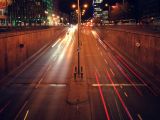Now that Huawei has revealed its flagship smartphone, the P9, more information about the dual-camera setup provided by Leica has been released.
If you’ve been wondering what’s with all the hype about dual-camera smartphones, here is a more in-depth look at what Huawei P9 has to offer when it comes to camera quality.
First of all, both cameras on the back side of the P9 sport 12-megapixel Leica optics that feature 1.25-micron pixel size sensors and f/2.2 aperture.
However, one of the rear cameras has an RGB sensor while the other one comes with a sensor that only captures black and white pictures. But why would Huawei add two cameras that can take two different types of photos?
It’s pretty simple, and those who are into photography probably know by now. The black and white sensor can capture more details in pictures since it doesn’t need to interpret the colors of the objects, it only filters the light.
Opposite to the monochrome sensor, the RGB one must filter the light and identify the colors as accurately as possible, which always leads to fewer details being captured in the pictures.
The camera captures more light than any other smartphone on the market
According to Huawei, since the P9 comes with two rear cameras, it can capture 70% more light than the Samsung Galaxy S7. On top of that, users can take pictures with a much higher level of details than any other smartphone available on the market.
Whenever you take a picture with the P9, both cameras are used, and the handset combines the information it gets from the sensors to produce a much better photo than those shot with single rear cameras.
Basically, the P9 combines the details obtained by the monochrome sensor with the colors captured by the second RGB sensor to provide accurate, highly detailed pictures.
Furthermore, Huawei P9’s camera uses multiple focus modes, so depending on the distance to the subject, it can activate the laser focus mode, autofocus or the contrast detection. The first one is used when you take close-ups while autofocus is enabled when you’re shooting something in the distance. When neither is enabled, contact detection activates itself.
Another aspect mentioned by Huawei is that the P9 features a dedicated “depth processor” that should allow the smartphone to focus 200% faster than a typical camera that relies on software for this operation.
Huawei has also released some sample photos taken with the P9, which we’ve added to the gallery. However, we’re expecting the actual testing for a better judgment on the quality of the P9’s camera.

 14 DAY TRIAL //
14 DAY TRIAL // 






